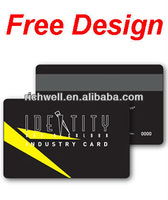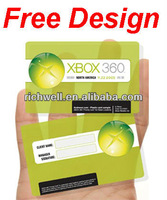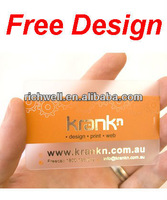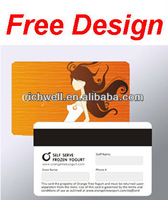- Gym Equipment[10]
- Temperature Instruments[10]
- HVAC Systems & Parts[1]
- Adhesive Tape[1]
- Other Heat Insulation Materials[10]
- Medical Consumables[3]
- Ultrasonic[7]
- Video Cameras[1]
- CCTV Camera[1]
- Surgical Instruments[1]
- Bracelets & Bangles[10]
- Pet Apparel & Accessories[10]
- Car Stickers[10]
- Other Beauty & Personal Care Products[1]
- Yoyo[7]
- Shoelaces[1]
- Pet Beds & Accessories[3]
- Stickers[10]
- Plastic Cards[10]
- Cleaning Brushes[3]
- Laundry Balls & Discs[8]
- Stuffed & Plush Toy Animal[2]
- Badges[1]
- Key Chains[8]
- Wigs[6]
- Hair Extension[10]
- Hair Curler[2]
- Hairpins[5]
- Toy Balls[10]
- Sunglasses[10]
- Socks[6]
- Mats & Pads[5]
- Scarf[4]
- Video Door Phone[4]
- Contact Person : Ms. Fan lisa
- Company Name : Hangzhou Richwell Commodity Firm
- Tel : 86-579-81337412
- Fax : 86-579-81337412
- Address : Zhejiang,jinhua city,qiubing Industrial district
- Country/Region : China
- Zip : 310000
Plastic Membership card with Magnetic strip and barcode Custom HiCo PVC Magnetic Card Full Color Free Design
Plastic Membership card with Magnetic strip and barcode
100% money back guarentee if you are not satisfied.
You also can purchase in blocks of 5, 10, 25, 50, 100, 250, 500, 1000, 2000, 3000, or more. Please contact us for price or see other product pages in my store.
Free Gift - A USD20-valued aluminum business card case with your order shipped to you (the color and type of the free gift are random. The following picture of the free gift are for presentation purpose only).
Features of Custom 500pcs Magnetic Card 500pcs Magnetic Stripe Card Custom HiCo PVC Magnetic Card Full Color Free Design Free Shipping Free Gift
*Size: 86*54mm (default CR8030, 3.375'' x 2.125'', the same size as a credit card, more options available free)
*Thickness: 0.76mm (defaultCR8030, 30 mil, the same thickness as a credit card, more options available free)
*Material: environmentally friendly PVC plastic
*Rounded corners
* ISO standard
Custom Options Free Available On The Cards:
--Free design (if you need for VIP cards, loyalty cards, membership cards, gift cards, discount cards, promotional cards, ID cards, company photo ID cards, and more.)
--Free gift aluminum business card case included
--Free shipping by DHL within 5-7 business days to US, Europe, Australia, and more(Please check it in making orders)
--Full color
--Signature panels
--Magnetic stripes and encoding
--Bar coding
--Embossing
--Electronic chip modules and encoding
--Special ink colors (gold, silver)
--Matt or glossy lamination
About the Cards Size and Thickness
CR80 PVC cards used here are the standard, most commonly used plastic card size. Measuring 3.375'' x 2.125'', CR8030 cards are the same size and thickness as a credit card. CR80 30 mil PVC cards are also known as CR8030 or CR80.030 cards. We have more options to meet your requirements. Please contact us for more information.
Process and Production for Your Custom Order
(1)After your payment, please send us your email address trough Aliexpress Message Box and tell us your requirements/ideas for your custom products. Your email address will be used only for delivering sample design to you from us.
(2) If you need a design from us, please send us any artworks you have, including pictures, logos, and text which you want to be printed on the custom products. we will design a layout and send a proof to your email address you provided. You are also welcome to use our free designs.
(3)You confirm the proof/layout/design, or request changes on it.
(4)Until you are 100% satisfied with changes, we print and ship your custom products to you.
Production Time
Appr. 5-7 business days.
Shipping Time
Appr.5-7 business days to USA, Europe, and Australia, Asia. (if you are outside the regions, you will find the shipping time and fees in making orders.)
About Our Cards Printing Service
We are a specialist on custom-made cards, including business cards (in paper, plastic or metal), HiCo magstripe cards (magnetic stripe cards), plastic cards, PVC cards, VIP cards, loyalty cards, membership cards, gift cards, discount cards, promotional cards, ID cards, company photo ID cards, and smart cards, IC cards, RFID cards and more. We design, print and ship. Please contact us for more information.
About Sihao Custom Products
Sihao Custom Products is a leading Chinese business and lifestyle brand, by Sihao International, specializing in personalized products and services based in Guangzhou, China. Since 1979, Mr.Zhang Sheng, and his wife Mrs.Zhang Chun, founders of the brand, have started their business card designing service in a store in No.293 Guangyuan Road of Guangzhou, one of the richest cities in South China. They won a wide reputation for their high-quality-and-quick services in the business printing world in the early stage. Sihao Custom team has expanded its product lines from business printing to lifestyle products in 1990s, and began its overseas services in the new millennium. Now Sihao Custom is serving the customers from over 150 countries around the world.
About Magnetic stripe card (MAGNETIC / SWIPE CARDS)
A magnetic stripe card is a type of PVC card with a band of magnetic material embedded into resin on the back of the card. The magnetic stripe is read by physical contact and swiping past a reading head. Magnetic stripe cards are commonly used in credit and identity cards. A magstripe encoder is available for all Magicard printers. It is read by Magnetic Card Readers (also known as Magnetic Stripe Reader or MSR). An example of the reverse side of a typical credit card: Green circle #1 labels the Magnetic stripe Visualization of magnetically stored information on a magnetic stripe card (Recorded with CMOS-MagView) A magnetic stripe card is a type of card capable of storing data by modifying the magnetism of tiny iron-based magnetic particles on a band of magnetic material on the card. The magnetic stripe, sometimes called swipe card or magstripe, is read by swiping past a magnetic reading head.
Magnetic recording on steel tape and wire was invented during World War II for recording audio. In the 1950s, magnetic recording of digital computer data on plastic tape coated with iron oxide was invented. In 1960 IBM used the magnetic tape idea to develop a reliable way of securing magnetic stripes to plastic cards[1], under a contract with the US government for a security system. A number of International Organization for Standardization standards, ISO/IEC 7810, ISO/IEC 7811, ISO/IEC 7812, ISO/IEC 7813, ISO 8583, and ISO/IEC 4909, now define the physical properties of the card, including size, flexibility, location of the magstripe, magnetic characteristics, and data formats. They also provide the standards for financial cards, including the allocation of card number ranges to different card issuing institutions.
Contents [hide]
1 The magnetic stripe
2 Magnetic stripe coercivity
3 Financial cards
4 United States driver's licenses
5 Other card types
6 See also
7 Notes
8 External links
[edit]The magnetic stripe
The first prototype of magnetic stripe card created in IBM in 1960'. A stripe of cellophane magnetic tape is fixed to a piece of cardboard with clear adhesive tape
Initially IBM considered and rejected using bar codes and perforations, because these methods did not offer sufficient density of information storage required for the credit cards. Magnetic storage was already known from World War II and computer data storage in the 1950s.[1] The process of attaching a magnetic stripe to a plastic card was invented at IBM in 1960 under a contract with the US government for a security system. Forrest Parry, an IBM engineer, had the idea of securing a piece of magnetic tape, the predominant storage medium at the time, to a plastic card base. He became frustrated because every adhesive he tried produced unacceptable results. The tape strip either warped or its characteristics were affected by the adhesive, rendering the tape strip unusable. After a frustrating day in the laboratory, trying to get the right adhesive, he came home with several pieces of magnetic tape and several plastic cards. As he walked in the door at home, his wife Dorothea was ironing clothing. When he explained the source of his frustration: inability to get the tape to "stick" to the plastic in a way that would work, she suggested that he use the iron to melt the stripe on. He tried it and it worked.[2][3] The heat of the iron was just high enough to bond the tape to the card. There were a number of steps required to convert the magnetic striped media into an industry acceptable device. These steps included: 1) Creating the international standards for stripe record content, including which information, in what format, and using which defining codes. 2) Field testing the proposed device and standards for market acceptance. 3) Developing the manufacturing steps needed to mass produce the large number of cards required. 4) Adding stripe issue and acceptance capabilities to available equipment. These steps were initially managed by Jerome Svigals of the Advanced Systems Division of IBM, Los Gatos, California from 1966 to 1975. In most magnetic stripe cards, the magnetic stripe is contained in a plastic-like film. The magnetic stripe is located 0.223 inches (5.56 mm) from the edge of the card, and is 0.375 inches (9.52 mm) wide. The magnetic stripe contains three tracks, each 0.110 inches (2.79 mm) wide. Tracks one and three are typically recorded at 210 bits per inch (8.27 bits per mm), while track two typically has a recording density of 75 bits per inch (2.95 bits per mm). Each track can either contain 7-bit alphanumeric characters, or 5-bit numeric characters. Track 1 standards were created by the airlines industry (IATA). Track 2 standards were created by the banking industry (ABA). Track 3 standards were created by the Thrift-Savings industry. Magstripes following these specifications can typically be read by most point-of-sale hardware, which are simply general-purpose computers that can be programmed to perform specific tasks. Examples of cards adhering to these standards include ATM cards, bank cards (credit and debit cards including VISA and MasterCard), gift cards, loyalty cards, driver's licenses, telephone cards, membership cards, electronic benefit transfer cards (e.g. food stamps), and nearly any application in which value or secure information is not stored on the card itself. Many video game and amusement centers now use debit card systems based on magnetic stripe cards.
Magnetic stripe cloning can be detected by the implementation of magnetic card reader heads and firmware that can read a signature of magnetic noise permanently embedded in all magnetic stripes during the card production process. This signature can be used in conjunction with common two factor authentication schemes utilized in ATM, debit/retail point-of-sale and prepaid card applications.[4]
Counterexamples of cards which intentionally ignore ISO standards include hotel key cards, most subway and bus cards, and some national prepaid calling cards (such as for the country of Cyprus) in which the balance is stored and maintained directly on the stripe and not retrieved from a remote database.
[edit]Magnetic stripe coercivity
Detailed visualization of magnetically stored information on a magnetic stripe card (Recorded with CMOS-MagView). Magstripes come in two main varieties: high-coercivity (HiCo) at 4000 Oe and low-coercivity (LoCo) at 300 Oe but it is not infrequent to have intermediate values at 2750 Oe. High-coercivity magstripes are harder to erase, and therefore are appropriate for cards that are frequently used or that need to have a long life. Low-coercivity magstripes require a lower amount of magnetic energy to record, and hence the card writers are much cheaper than machines which are capable of recording high-coercivity magstripes. A card reader can read either type of magstripe, and a high-coercivity card writer may write both high and low-coercivity cards (most have two settings, but writing a LoCo card in HiCo may sometimes work), while a low-coercivity card writer may write only low-coercivity cards.
In practical terms, usually low coercivity magnetic stripes are a light brown color, and high coercivity stripes are nearly black; exceptions include a proprietary silver-colored formulation on transparent American Express cards. High coercivity stripes are resistant to damage from most magnets likely to be owned by consumers. Low coercivity stripes are easily damaged by even a brief contact with a magnetic purse strap or fastener. Because of this, virtually all bank cards today are encoded on high coercivity stripes despite a slightly higher per-unit cost.
Magnetic stripe cards are used in very high volumes in the mass transit sector, replacing paper based tickets with either a directly applied magnetic slurry or hot foil stripe. Slurry applied stripes are generally less expensive to produce and are less resilient but are suitable for cards meant to be disposed after a few uses. It is also called magnetic card, pvc card magnetic, magnetic stripe card, hico magnetic card, discount msr magnetic card, pvc card with, magnetic stripe, pvc magnetic cards, pvc magnetic print cards, pvc card with magnetic stripe, pvc card magnetic chip. [edit]Financial cards Main article: ISO/IEC 7813
There are up to three tracks on magnetic cards used for financial transactions, known as tracks 1, 2, and 3. Track 3 is virtually unused by the major worldwide networks, and often isn't even physically present on the card by virtue of a narrower magnetic stripe. Point-of-sale card readers almost always read track 1, or track 2, and sometimes both, in case one track is unreadable.
Plastic Membership card with Magnetic strip and barcode Custom HiCo PVC Magnetic Card Full Color Free Design










